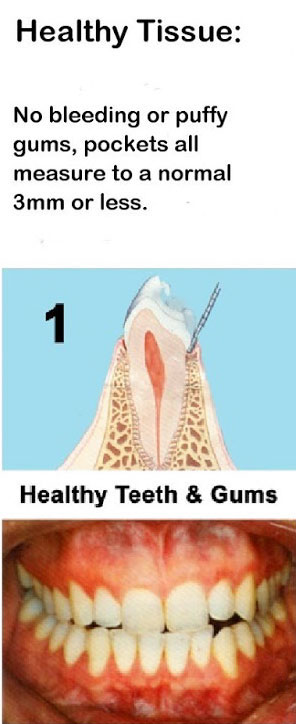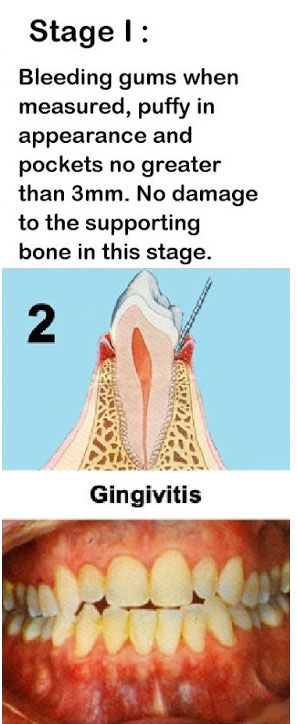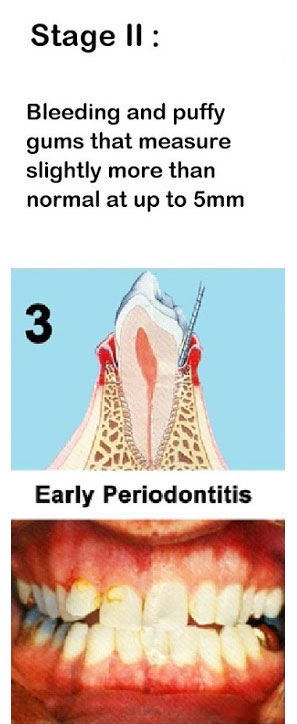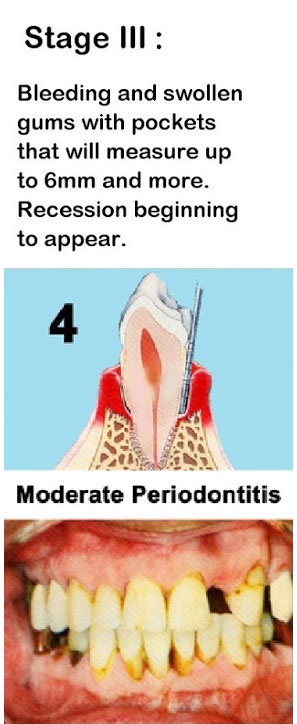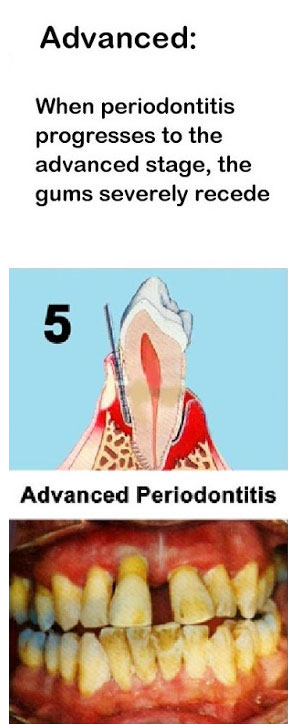Type of Gum Disease
Periodontal (gum) diseases, including gingivitis and periodontitis, are inflammatory diseases of bacterial origin that, left untreated, can lead to tooth loss. The word periodontal literally means “around the tooth.” Periodontal disease is a chronic bacterial infection that affects the gums and bone supporting the teeth. Periodontal disease can affect one tooth or many teeth. It begins when the bacteria in plaque (the sticky, colorless film that constantly forms on your teeth) causes the gums to become inflamed.
Gingivitis
Gingivitis is the mildest form of periodontal disease. It causes the gums to become red, swollen, and bleed easily. There is usually little or no discomfort at this stage. Gingivitis is often caused by inadequate oral hygiene. Gingivitis can be reversed with professional treatment and good oral home care.
Periodontitis
Untreated gingivitis can advance to periodontitis. With time, plaque can spread and grow below the gum line. Toxins produced by the bacteria in plaque irritate the gums. The toxins stimulate a chronic inflammatory response in which the body in essence turns on itself, and the tissues and bone that support the teeth are broken down and destroyed. Gums separate from the teeth, forming pockets (spaces between the teeth and gums) that become infected. As the disease progresses, the pockets deepen and more gum tissue and bone are destroyed. Often, this destructive process has very mild symptoms. Eventually, teeth can become loose and may have to be removed.
There are many forms of periodontitis. The most common ones include the following.
- Aggressive periodontitis generally occurs in young patients who are otherwise clinically healthy. It has a strong genetic component. Common features include rapid bone loss around front teeth and molars.
- Chronic periodontitis generally occurs in adults and progresses slowly over a long period of time. The disease results from inflammation and bone loss that affect the supporting structures of the teeth. This type of periodontal disease is the most common, is often painless, and is characterized by deep pockets, bleeding gums, loose teeth, and/or gum recession. Progression of bone loss usually occurs slowly, but periods of rapid progression can occur.
- Necrotizing periodontal diseases are infections characterized by painful gums, ulcerated and receded gums, and possible bone loss. This form of periodontal disease is most commonly observed in individuals with systemic conditions such as HIV infection, malnutrition, immunosuppression, and those people undergoing severely stressful situations.

